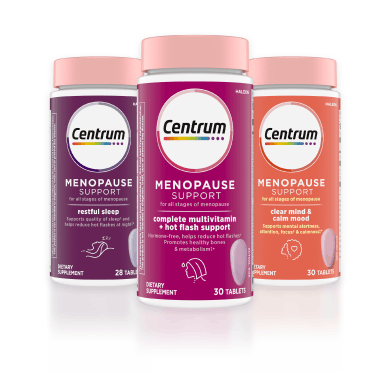What Are Some Foods That Are High in Magnesium?

Magnesium is one of the fundamental minerals that the body requires. It is vital for day-to-day functions, and not getting enough magnesium can lead to health problems.3 Fortunately, magnesium naturally occurs in many of the foods we eat daily. Whether it’s favorites like baked potatoes or avocados on whole wheat toast, or bananas and cereal for breakfast, getting a basic dose of magnesium is easy. If you’re concerned about your magnesium levels, the following foods that are high in magnesium can give you a boost—as well as a daily multivitamin with magnesium.
What is Magnesium, and How Does it Benefit Your Body?
Magnesium, the fourth most abundant mineral in the body, is vital to many key roles such as metabolism: the physical and chemical processes of converting food to energy.2 Two vital organs, the heart and kidneys, require magnesium to maintain their functionality.2
Bones and teeth require magnesium to grow and stay strong (approximately 50-60% of the magnesium in an adult is stored in the bones).5 Several population-based studies indicate positive associations between magnesium intake and bone mineral density in both men and women (including postmenopausal and elderly).5 Magnesium helps our muscles expand and contract, as well as helps transport calcium and potassium to different parts of the body.5 The nervous system requires magnesium so that nerve cells can communicate, and the heart uses magnesium to maintain a healthy rhythm.5
Foods That Are High in Magnesium
Just a few servings of foods with plenty of magnesium are enough to stay healthy.4 Some of the healthiest and less-processed foods that we can eat are high in magnesium:
- Nuts and seeds: pumpkin and chia seeds, almonds, peanuts, cashews
- Whole grains: shredded wheat, fortified breakfast cereals, whole wheat bread
- Greens: spinach, broccoli, edamame
- Fruit: avocados, bananas, apples, raisins
- Dairy: milk, yogurt
- Meat: salmon, chicken breast, lean ground beef
Common items in the pantry, like brown rice, snacks like dark chocolate and roasted nuts are also good sources of magnesium.4
Cook Healthy Dishes with Magnesium-Rich Foods
It’s easy to eat healthy and get the magnesium that you need! Consider the following menu ideas for a breakfast to start the day, a quick weeknight dinner, or a special family affair:
- Baked potato topped with broccoli and Greek yogurt
- Avocado spread on whole wheat toast
- Wild-caught salmon and sauteed spinach
- Trail mix with peanuts, almonds, raisins, and cashews
- Coffee with vanilla soymilk and cocoa powder
- Steamed halibut and basmati rice
- Diced chicken and brown rice bowl
- Instant oatmeal with sliced apples
- Plain, low-fat yogurt with strawberries
- Ground beef chili with black and kidney beans
- Shelled and boiled edamame
- Shredded wheat cereal with soymilk
How Magnesium Supplements Can Help
According to the National Institute of Health, the recommended dietary allowance for daily magnesium intake is between 400 and 420 mg for men over 18 and 310 and 320 mg for women.5 As for supplements, the upper intake levels for men and women (pregnant or not) over 18 is 350 mg. If you believe your magnesium intake is less than optimal, talk to your healthcare provider about whether or not a magnesium supplement is right for you.1 If you’re experiencing symptoms of health issues related to magnesium, talk to your doctor about whether a magnesium supplement can help.
And for people who may not be getting enough magnesium in their diets, multivitamin supplements with magnesium, such as Centrum Silver Men 50+, can help fill in the gaps you need to maintain healthy nutrition. In addition to magnesium, these specialized multivitamins also contain necessary vitamins such as D and B6.
Support heart health, brain function, and healthy muscles with unique formulas tailored to men and women at every stage of their lives.
*These statements have not been evaluated by the Food and Drug Administration. This product is not intended to diagnose, treat, cure, or prevent any disease.










